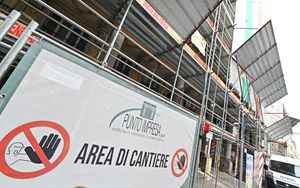(Finance) – “One of the major obstacles to the participation of SMEs in the public procurement market in Italy is represented, as it is known, from the inefficiency of the PA, and in particular from a system hyper-regulated and often farraginosor which prevents the implementation of public investments in an acceptable time frame and which ends up representing a real obstacle to economic growth. In fact, (as revealed by a recent survey by Unindustria Roma and Lazio on the procurement system for SMEs), the time that passes between the decision to start an intervention project (which coincides with the request of the CUP) and the start of the design takes, on average, 254 days in Italy. This means that, once it has been decided to activate a new project and the financial coverage (necessary element for the release of the CUP code) has been identified, the project remains in stand-by for 8-9 months “.
This is what matters the Eurispes survey on infrastructures and the construction sector in Italy with the aim of exploring the state of health of the sector and the adequacy of the infrastructural system in our country. The volume explores various aspects and addresses topical issues such as the effects of the Recovery Plan on the sector, the safety of infrastructures, the problems related to “dwarfism” of companies and those deriving from a excess of bureaucracy and legislative provisions, the SEZs, the Plan for the Cities, the new BIM technologies, but also the need to monitor the sector in terms of maintaining legality.
What will happen now with the launch of the program defined by the PNRR? – “If we take as a reference a threshold of works between 2 and 20 million euros, we discover that the number of companies potentially able to participate in these tenders stands at a value of approximately 9,000 units; over i 20 million euros the enterprises do not exceed 530 units. On the other hand – the survey points out – the constant, strong downsizing of the productive fabric cannot be underestimated; the disappearance from the market of tens of thousands of construction companies (between 2008 and 2016 over 120 thousand) especially in the more structured companies, with the consequent loss of technical skills and experience; the loss of medium-sized or large companies (the average number of employees per company fell to 2.6, it was 3 in 2008), and of companies engaged in building construction (the market share fell to 23%) .
We pay, today more than ever – we still read – “the lack of project e we have not yet managed to cope with the emergencies that have materialized in these twelve years. We have witnessed the escape of at least 600,000 workers. Lack of manpower, rising costs of raw materials risk holding back growth. There is a shortage of workers and artisans, and in recent months the staff is difficult to find. There is a shortage of specialized personnel, especially in the maintenance of building structures. We have gone from lack of work to lack of manpower “
The small and medium-sized enterprises have been severely hit by the economic crisis of the last decade: othey perish in a context of weak demand and high uncertainty, at a time when banks, which are their main source of external financing, are subjected to stricter rules that limit their ability to lend and take on risk. In fact, access to finance? and its cost? they generally represent a cause of serious concern for SMEs, more than for large companies and not only because of the current crisis, but also because of general market failures “.
Imperative, therefore, strengthen the ability to participate in public procurement of smaller companies so as not to leave the South behind.
“For many years. The survey underlines – Eurispes points out” that of justice is one of the issues that now present an emergency character and which will be decisive for the recovery and relaunch of the economy. The abnormal length of the trials led to numerous convictions in Italy by the European Court of Human Rights e it represents an obstacle to the country’s competitiveness, but also to its overall level of civilization “.
